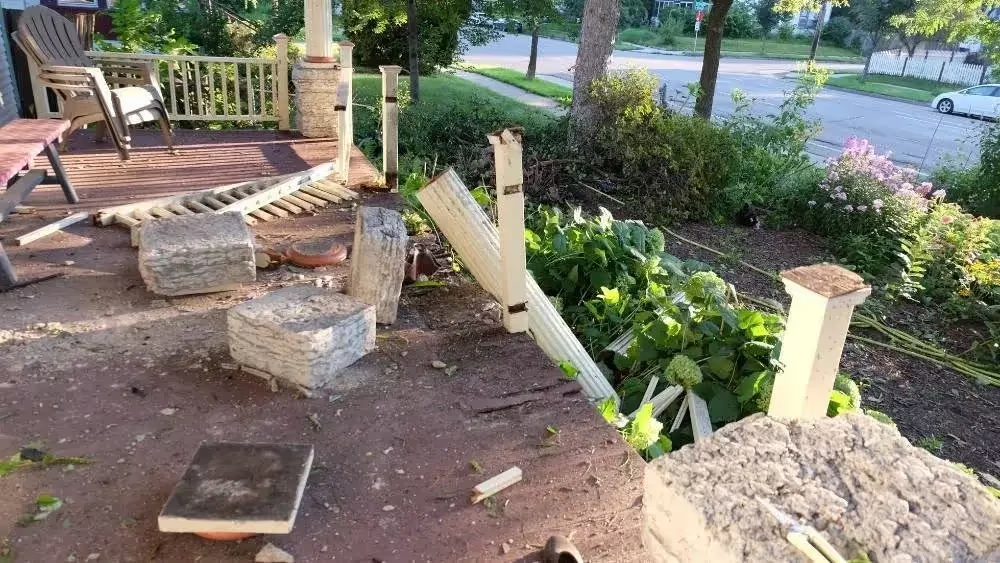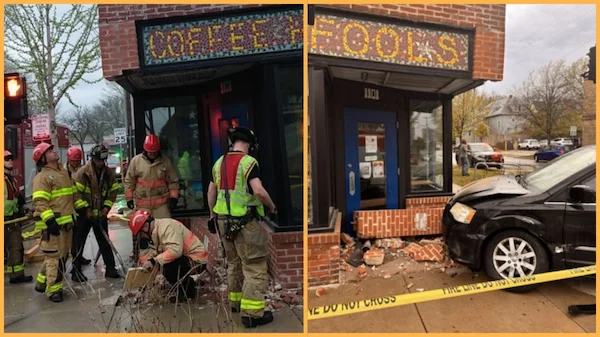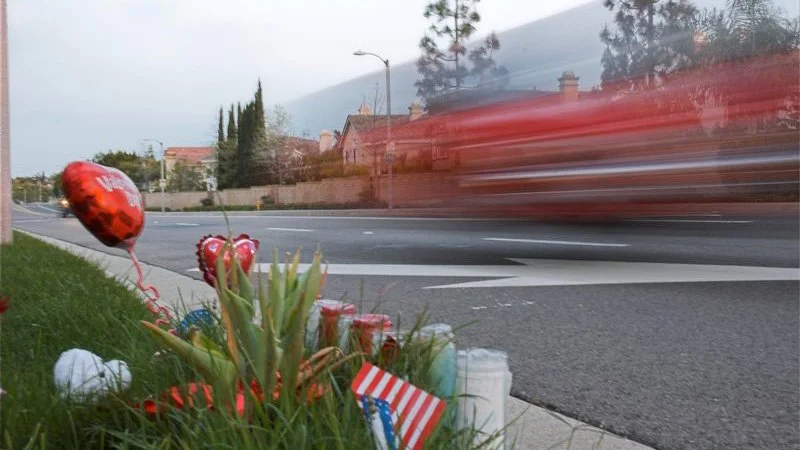Editor's Note: The challenges our cities face are growing, but so is the strength of this movement. Every story we share, every idea we spread, and every tool we build exists because people like you are committed to showing up. Your membership isn’t passive—it’s the momentum that makes change possible.
When a serious crash happens on a dangerous street, the usual playbook is depressingly familiar: the police write a report, insurance companies assign blame to one of the parties involved, and the whole thing is dismissed as a one-off event that couldn’t be prevented. In the meantime, the same design flaws that contributed to the crash remain, and the same conditions keep inviting the same results.
But in Minneapolis, a group of residents and local experts is showing a better way.
Park Avenue Residents Refuse To Accept Crashes as Inevitable
On August 11, 2024, an SUV and Mustang raced down Park Avenue. The SUV cut off the Mustang, running it off the road. The Mustang hit a tree, damaged two houses, and came to rest only after slamming into a third house. Cell phone data indicates the cars were going 85 mph at the time of the crash, almost three times the speed limit. Fortunately, the crash occurred just before 5 a.m. and the early hour meant the streets were empty. No residents were injured and there were no fatalities. However, the three houses suffered significant damage.

This was an unfortunately familiar occurrence for residents. “My wife and I knew instantly what had happened,” said Mark Schoening, a longtime resident whose own home was damaged in the crash.
Mark has been advocating for a redesign of Park Avenue since 2014. For 10 years, he was dismissed because “there weren’t enough fatal accidents in this area for them to change any of the infrastructure.” But that seems to have changed. Shortly after the August 11 crash, Mark learned that Hennepin County plans to repave Park Avenue, with a focus on increasing safety.
Mark wasn’t about to waste the opportunity. He and several other community members leaped into action, forming a group called “Slow the Roll.” They ran a public awareness campaign, conducted a community survey, and drummed up engagement at public meetings to help shape the repavement plans. “We were able to engage over 200 participants in [the] community survey,” Mark said, “and attendance quickly picked up at those future county engagements about the safety project.”
Now, the community has taken the next step in their advocacy: conducting a Crash Analysis Studio. A panel of Minneapolis residents convened last weekend to analyze the site of the crash, with an audience of area residents and advocates. Nate Jung, an engineer with Toole Design, acted as the group’s technical expert. Mark brought his local expertise as a longtime resident and advocate. Also on the panel was Laura Mitchell, a local advocate and president of a transportation nonprofit.
The panel identified several design elements that contributed to the crash. The most obvious is the width of the street. Park Avenue is 54 feet wide from curb to curb. While half of that width is dedicated to on-street parking and a bike lane, the panelists noted that they’re only delineated by paint and often go unused. People are too afraid to bike or park their cars along the street, scared off by a long history of crashes and property damage. Without parked cars or bikers, there’s no optical narrowing — no sense of enclosure created by vertical structures — to indicate that cars can’t use all 54 feet of pavement.
In addition, Park Avenue is a one-way street. This is characteristic of highway design, which makes people feel safer driving at high speeds. It also makes drag racing easier, as racers don’t have to worry about getting into a head-on collision.
Panelists also pointed out the lack of crosswalks in the area. Crosswalks are placed only at intersections with traffic lights, which are three blocks — approximately 1,800 feet — apart. That means, for much of this stretch of street, the crosswalks are completely invisible. This indicates to drivers that people aren’t walking in the area, so they feel safe traveling at higher speeds.
How To Make Park Avenue Safer
The panelists didn’t just point out problems. They also identified ways the street could be made safer.
The county could immediately use flex posts to add curb bump-outs and a bike lane divider. This would optically narrow the street. Similar interventions have been used in the area during construction projects, and residents said they were highly effective at slowing cars. The county could also use paint to add crosswalks at all intersections, not just the signalized ones.
In the short term, the county could swap the bike and parking lane, so the bike lane is closest to the curb. Parked cars would provide some protection for bikers and increase optical narrowing. The county could also implement rested red signals during night hours. This is a way of programming traffic lights so they remain red until a car approaches the intersection. The red lights would warn drivers not to speed.
In the mid- and long term, the panelists recommend adding raised crosswalks, planting trees along the street, and even converting Park Avenue to a two-way street.
“Hennepin County has plans that take into account many of these concerns. They’ve done a good job at providing an interim solution for 2027,” engineer Nate Jung emphasized. County plans include switching the bike and parking lanes, as well as adding medians and curb extensions.
Hennepin County deserves credit for recognizing Park Avenue’s danger and committing to a safer design. But the two years between now and 2027 matter just as much as the years after. Quick-build projects — using paint, flex posts, and other temporary materials — could slow speeds and make the area safer today. It would also give the county real-world data to refine their more permanent design changes before construction even begins.
This approach doesn’t just apply to Minneapolis. Every community facing a dangerous street can start today with small, fast, affordable changes. On Park Avenue, Mark observed that a single cone placed in front of a pothole immediately changed driver behavior and slowed speeds. Imagine what a network of quick, targeted interventions could do.










